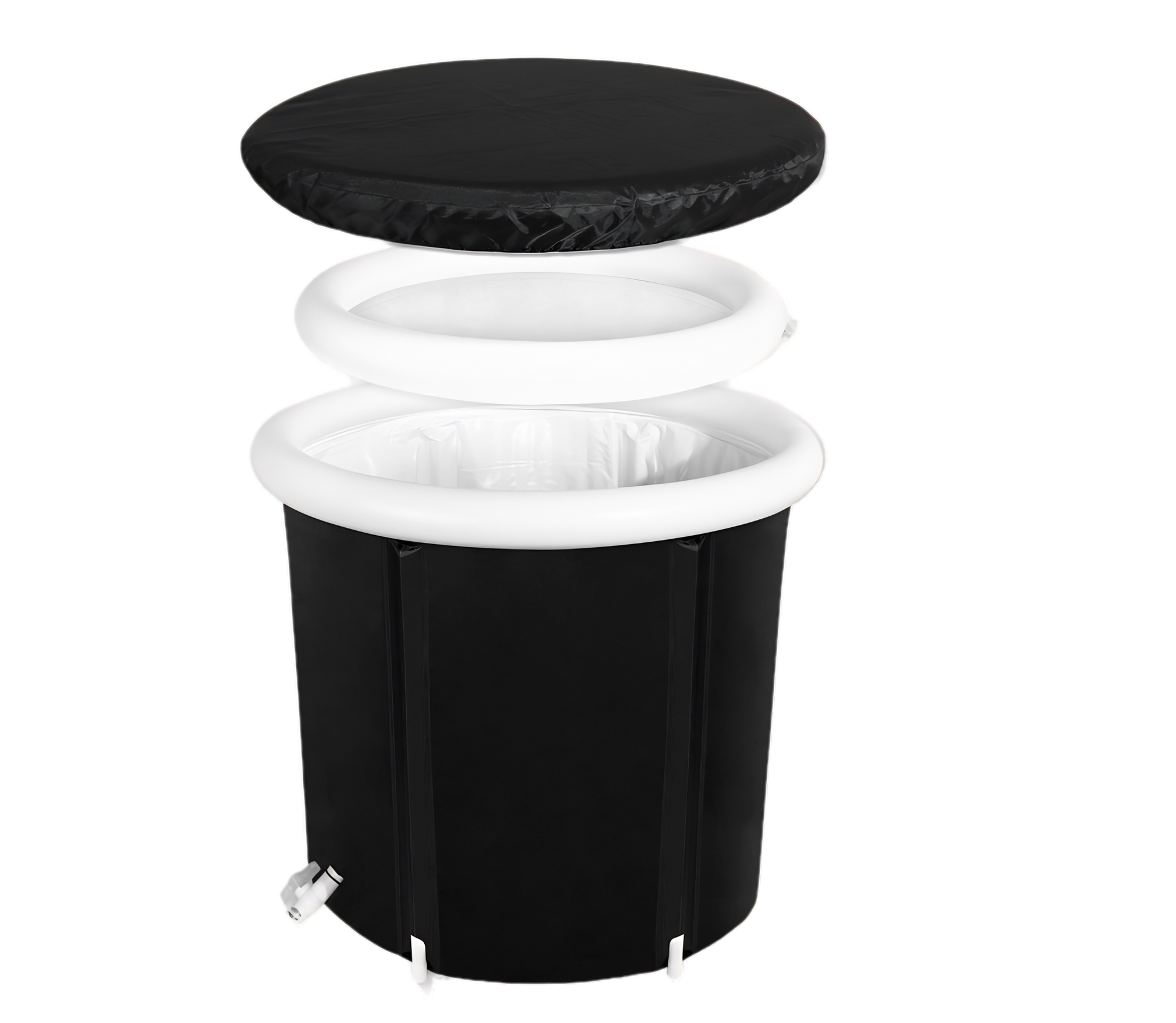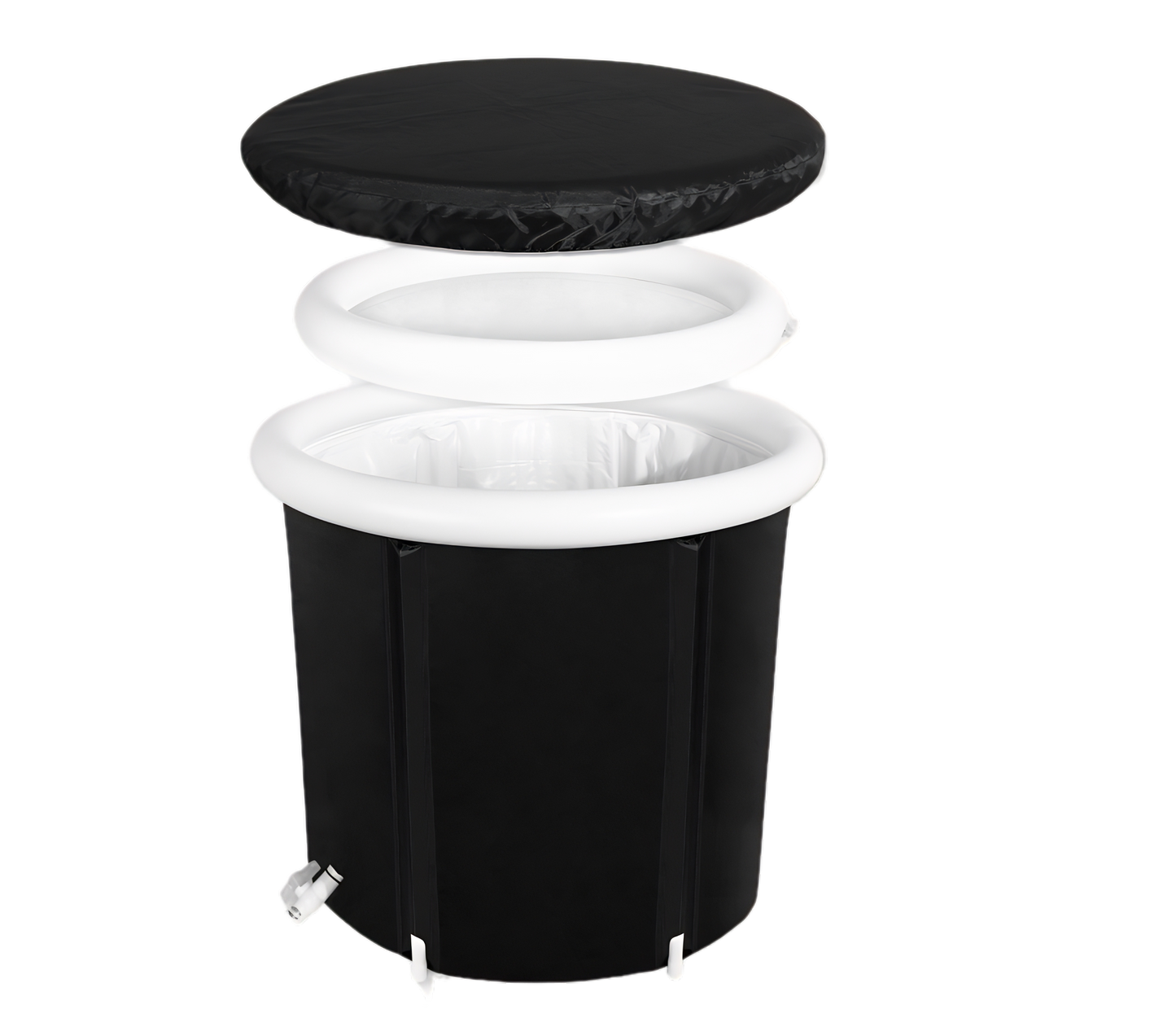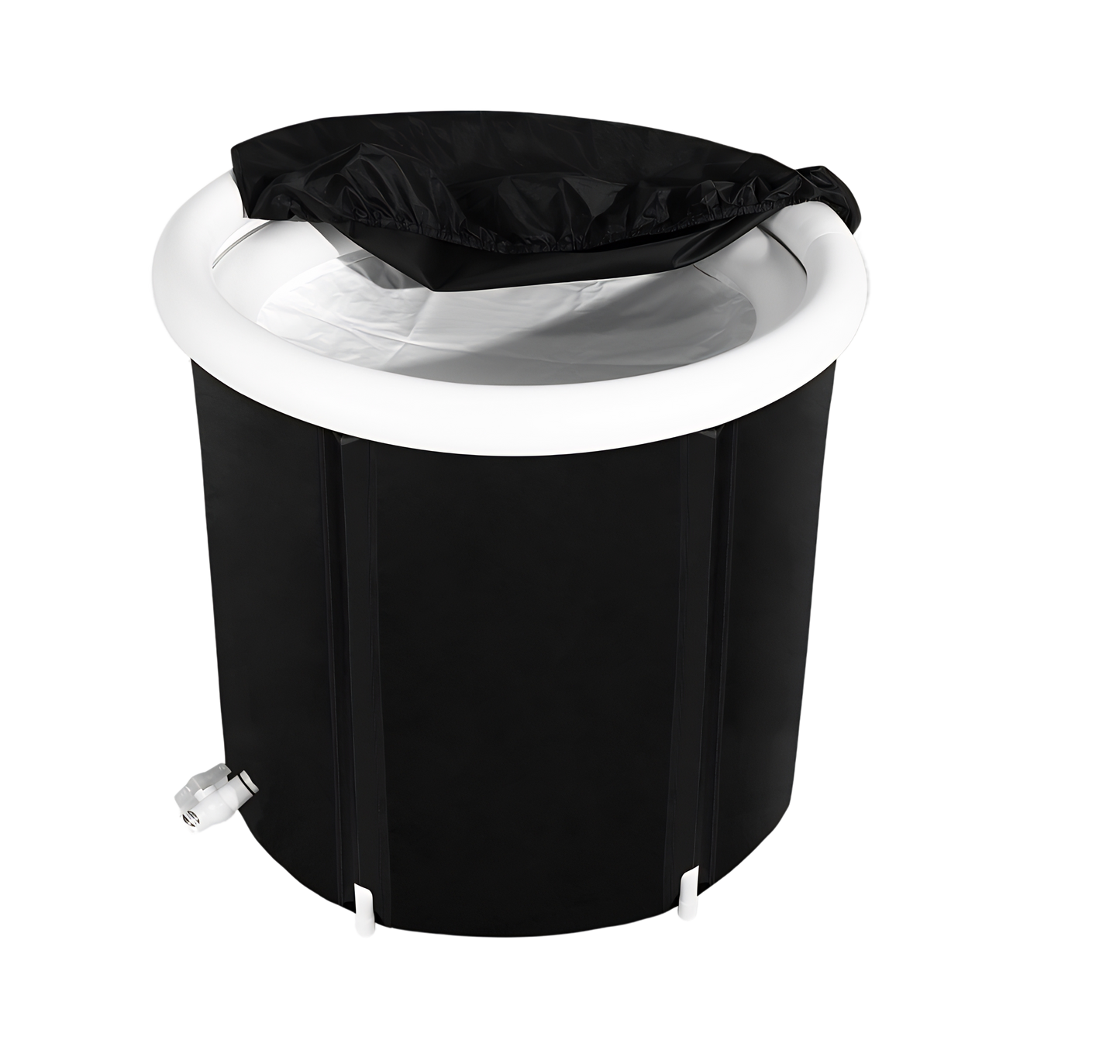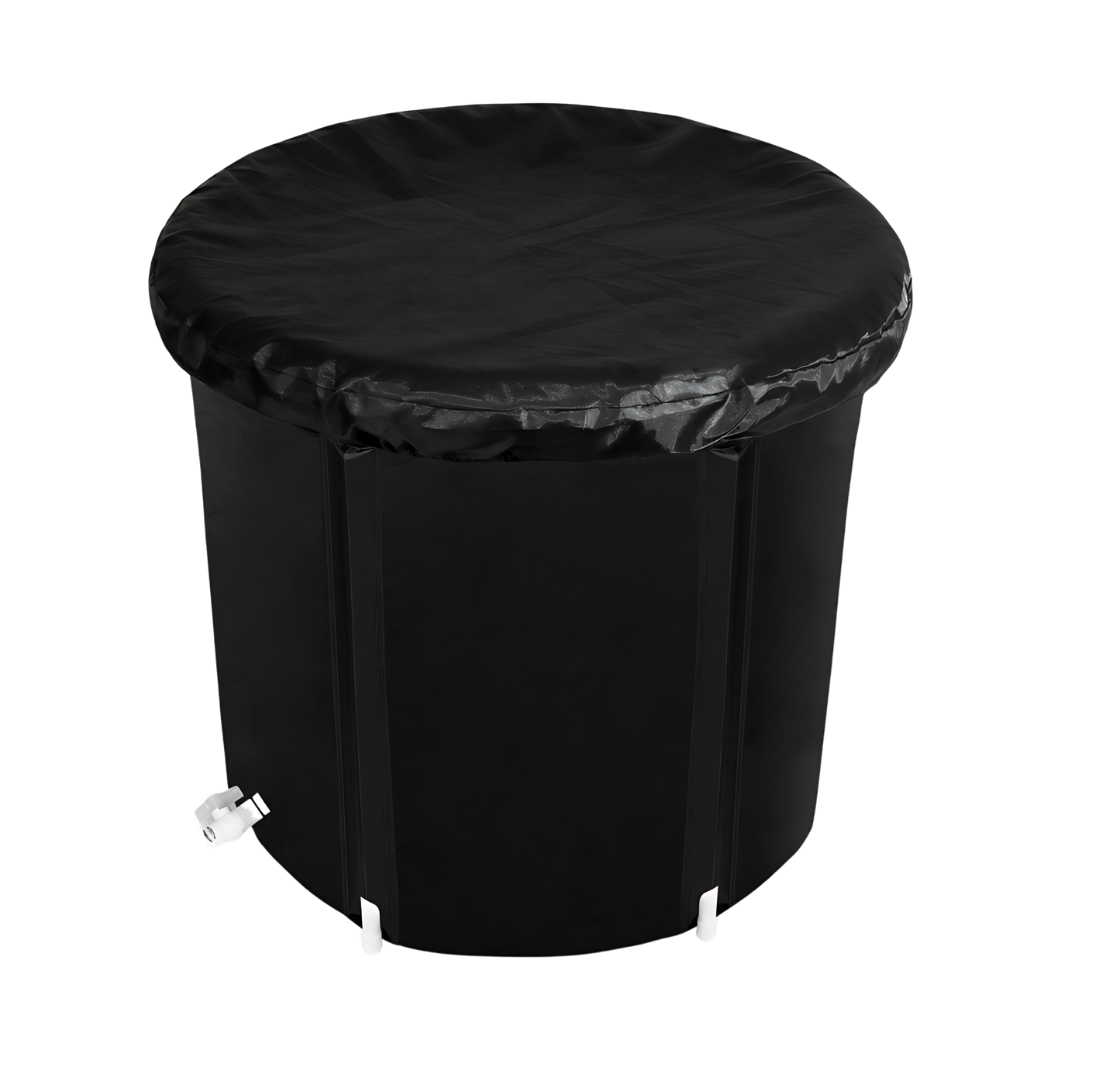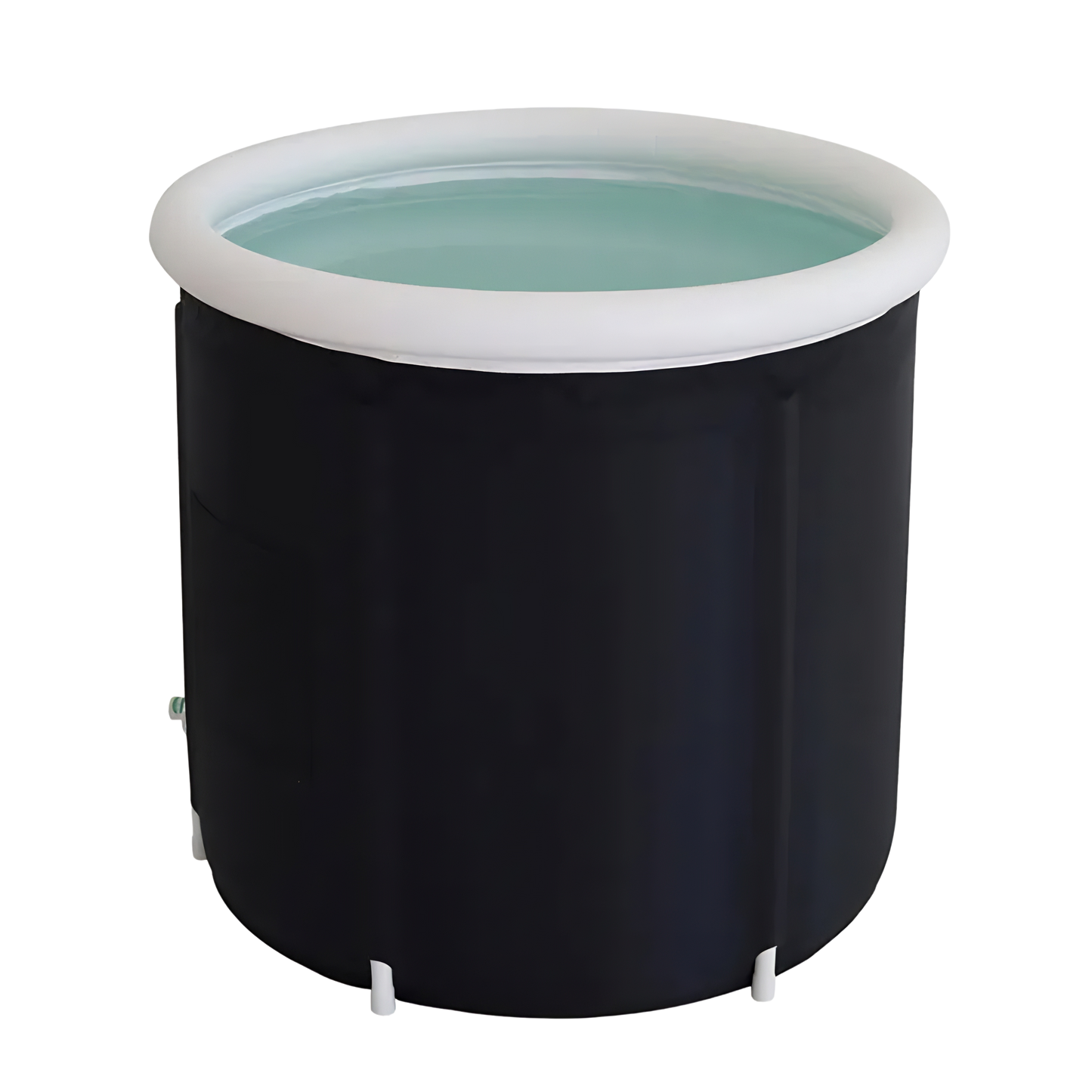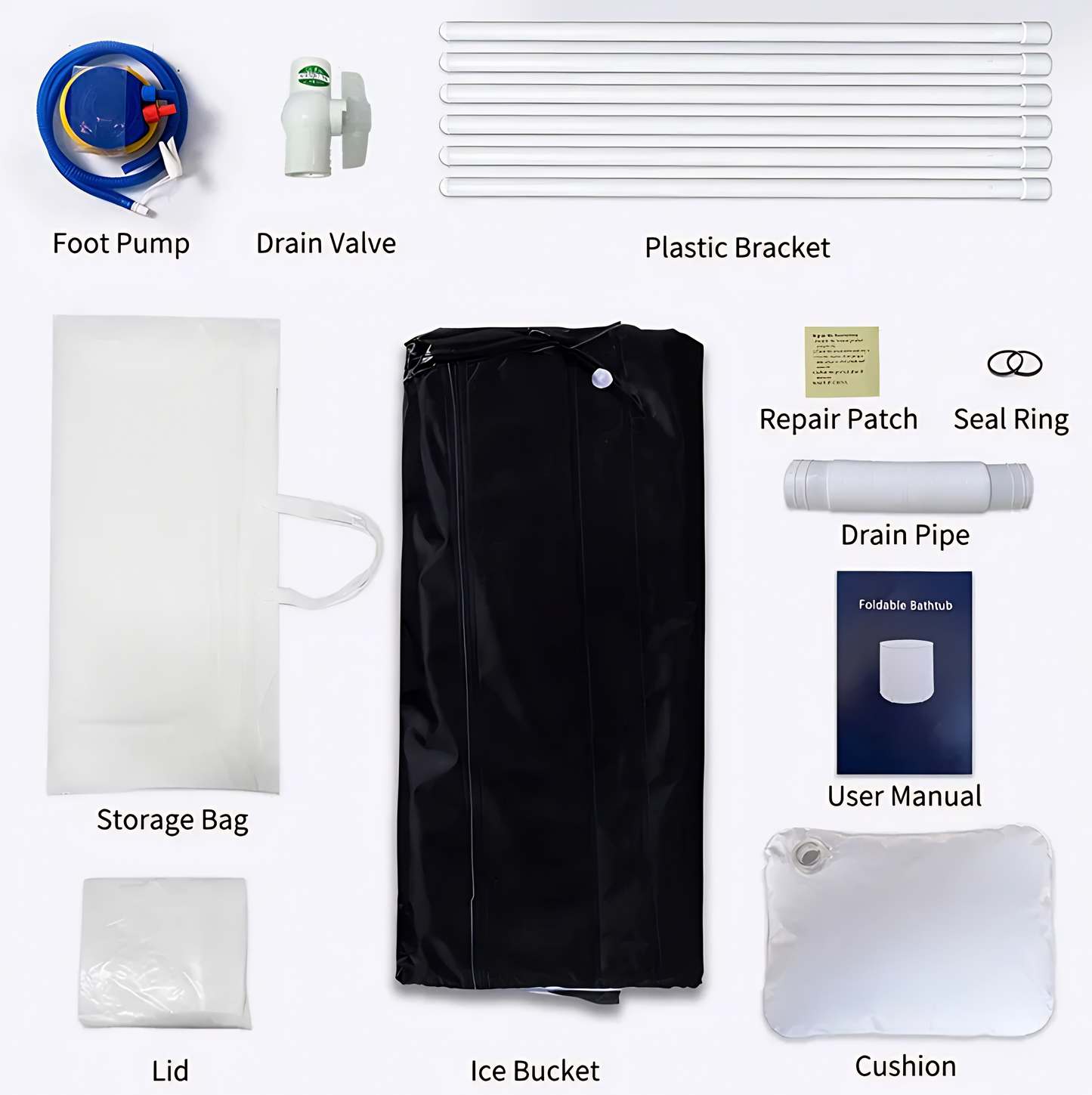Using an ice bath for tennis elbow can provide significant relief and aid in the recovery process. While there may be varying opinions on the effectiveness of ice baths for tennis elbow, many individuals have found them to be a valuable natural remedy. In this article, we will explore the benefits of ice bath therapy for tennis elbow and provide tips on how to utilize it effectively.
Key Takeaways:
- Ice baths can help reduce inflammation and provide temporary pain relief for tennis elbow.
- Cold therapy stimulates blood circulation and promotes healing in the affected tendons and muscles.
- Portable ice bath options are available for on-the-go treatment.
- Consult with a healthcare professional to ensure safe and effective use of ice baths.
- Alternative remedies, such as physical therapy exercises and herbal remedies, can also provide relief for tennis elbow.
Ice Bath For Tennis Elbow: Do They Help?
Using an ice bath for tennis elbow can complement a comprehensive treatment approach, aiding in reducing inflammation and pain. Recovery from tennis elbow often includes rest, physical therapy, and exercises aimed at strengthening and stretching the forearm muscles, along with the possible use of braces or straps. An ice bath for tennis elbow offers temporary relief and can be an effective part of this multifaceted treatment strategy.
Tennis elbow, or lateral epicondylitis, is a condition caused by overuse of the arm, forearm, and hand muscles, leading to elbow pain. Treatment typically involves rest, physical therapy, and exercises to strengthen and stretch the forearm muscles. Ice baths can reduce inflammation and pain, assisting in the overall recovery process for tennis elbow.
Potential Benefits of Ice Baths for Tennis Elbow
Ice baths are believed to offer several potential benefits for individuals suffering from tennis elbow. One of the primary advantages is the ability of the cold temperature to help reduce inflammation in the affected area. Inflammation is a common symptom of tennis elbow and can contribute to pain and discomfort. By immersing the affected arm in an ice bath, the cold temperature helps to constrict blood vessels and decrease swelling.
In addition to reducing inflammation, ice baths can also provide temporary pain relief by numbing the area. The cold temperature has a numbing effect, which can help alleviate the sensation of pain and provide a sense of relief. This can be particularly beneficial for individuals experiencing acute pain or discomfort from their tennis elbow.
Furthermore, ice baths may help improve blood circulation and promote healing in the damaged tendons and muscles. The cold temperature stimulates vasoconstriction, which can increase blood flow to the affected area once the body warms up after the ice bath. Improved blood circulation enhances the delivery of oxygen and nutrients to the injured tissues, aiding in the healing process.
However, it is important to note that the effectiveness of ice baths for tennis elbow may vary between individuals. While many people have found relief and recovery through this therapy, others may not experience the same results. It is crucial to consult with a healthcare professional before starting ice bath treatment for tennis elbow to ensure it is appropriate for your condition and overall health.
In summary, ice baths have the potential to provide relief for tennis elbow by reducing inflammation, numbing the area, and promoting healing through improved blood circulation. However, individual experiences may vary, and it is essential to consult with a healthcare professional for personalized advice. In the next section, we will explore portable ice bath options as an alternative for tennis elbow relief.
Can Portable Ice Baths Help Tennis Elbow?
Yes, portable ice baths can help in managing symptoms of tennis elbow. The cold immersion provided by these baths can reduce inflammation and alleviate pain in the affected area, offering temporary relief from tennis elbow discomfort.
Portable ice baths are advantageous due to their convenience and ease of use. Made from lightweight, environmentally friendly, PVC canvas-like material (Non-Phthalate PVC), they are easy to transport and set up, requiring only water and ice. This portability allows athletes and individuals to use them in various locations, be it at home, at sports facilities, or during travel for competitions.
The benefits of portable ice baths extend beyond just symptom management for tennis elbow. They are known for aiding in overall muscle recovery, reducing soreness after intense physical activity, and potentially improving athletic performance by speeding up recovery time. This makes them a valuable tool not only for those suffering from tennis elbow but also for athletes and individuals seeking an effective recovery method after physical exertion.
To learn more about portable ice baths or to make a purchase, click here.
What is Tennis Elbow?

Tennis elbow, also known as lateral epicondylitis, is a condition characterized by pain and inflammation on the outer part of the elbow. It is often caused by repetitive motions of the arm and wrist, such as those involved in playing tennis or performing certain occupational tasks. The condition typically affects the tendons and muscles near the elbow joint, leading to tenderness, weakness, and difficulty with certain movements. Tennis elbow is a common injury among athletes and individuals who engage in activities that involve repetitive arm motions.
When an individual develops tennis elbow, the tendons and muscles in the forearm become damaged due to overuse or repetitive stress. This can result in micro-tears and degeneration, leading to pain and inflammation. The condition is called tennis elbow because it was originally associated with athletes who play tennis due to the repetitive movements involved in the sport. However, tennis elbow can affect anyone who engages in activities that involve repetitive arm motions, such as painters, carpenters, and musicians.
Tennis elbow is characterized by pain and tenderness on the outer part of the elbow. The pain may radiate down the forearm and can worsen with activities that involve gripping or lifting. In some cases, individuals may experience weakness in their grip strength and difficulty performing certain movements, such as shaking hands or twisting a doorknob.
If left untreated, tennis elbow can become a chronic condition and significantly impact an individual's daily activities and quality of life. It is important to seek appropriate medical attention and implement appropriate treatment strategies to manage the symptoms and promote healing.
What Causes Tennis Elbow?
Some common factors that contribute to the development of tennis elbow include:
- Playing racquet sports, such as tennis or squash, which involve repetitive arm motions and gripping of the racquet.
- Engaging in repetitive gripping motions in activities like weightlifting, gardening, or carpentry.
- Performing manual labor tasks that require repetitive arm and wrist movements, such as painting or plumbing.
- Using improper technique during certain activities, which puts additional strain on the tendons and muscles.
In addition to these activities, age and certain risk factors may also increase the likelihood of developing tennis elbow. For example, individuals who are older may be more prone to developing this condition due to natural degeneration of tendons and muscles. Other risk factors such as obesity and smoking can also contribute to the development of tennis elbow.
By understanding the causes and risk factors of tennis elbow, individuals can take proactive steps to reduce their risk. This may include practicing proper technique during activities, using appropriate protective equipment, taking regular breaks to rest and stretch, and maintaining a healthy lifestyle.
Tennis Elbow for Tennis Players
Tennis elbow, or lateral epicondylitis, is a common condition among tennis players, caused by repetitive use of the forearm muscles and tendons. This leads to pain and tenderness around the elbow, often due to the gripping and swinging motions in tennis. Effective management of tennis elbow involves a combination of rest, physical therapy, and specific exercises to strengthen the affected area.
The article on ice baths at the Australian Open discusses the prevalence of ice bath usage among players and speculates on the potential benefits of portable ice baths in such high-profile tournaments. While it doesn't confirm their use at the Australian Open, it highlights the growing interest in portable ice baths as a tool for athlete recovery.
Additionally, the connection between portable ice baths and tennis players' performance is significant, suggesting that regular use of ice baths can enhance on-court performance, even for those with repetitive strain injuries like tennis elbow. The role of portable ice baths in tennis players' recovery is also crucial, as these baths are increasingly recognized for their effectiveness in speeding up recovery times, essential for athletes dealing with tennis elbow.
Furthermore, understanding why tennis players take ice baths offers insights into their benefits beyond immediate injury management, encompassing long-term physical maintenance and the treatment of conditions like tennis elbow.
Incorporating both traditional treatments and modern recovery methods like ice baths is key to effectively managing tennis elbow in tennis players.
Alternative Tennis Elbow Remedies
In addition to ice baths, there are several alternative remedies and treatments that can provide relief for tennis elbow. These alternative options focus on non-invasive methods and natural remedies to alleviate pain and promote healing.
Examples of alternative tennis elbow remedies include:
- Physical therapy exercises: A trained physical therapist can design an exercise program to strengthen the muscles around the elbow and improve flexibility.
- Use of braces or supports: Wearing a brace or forearm strap can help reduce strain on the tendons and provide support during activities.
- Acupuncture: This traditional Chinese medicine practice involves the insertion of thin needles into specific points on the body to promote healing and relieve pain.
- Massage therapy: Gentle massage techniques can help reduce muscle tension, improve circulation, and promote relaxation in the affected area.
- Herbal remedies: Some herbs, such as turmeric and ginger, have anti-inflammatory properties that may help reduce pain and inflammation associated with tennis elbow.
It is important to consult with a healthcare professional or qualified practitioner before trying any alternative treatments to ensure their safety and effectiveness.
Summary
In summary, an ice bath can be a helpful tool for managing tennis elbow symptoms and promoting recovery. While there is some debate about the effectiveness of ice baths for tennis elbow, many individuals have found them to be beneficial in reducing inflammation, numbing the area, and improving blood circulation.
Portable ice bath options are also available for individuals who require on-the-go treatment. These options include cold therapy wraps, ice packs, and handheld ice massagers. These portable devices allow individuals to target the affected area and provide cold therapy treatment as needed.
It is important to consult with a healthcare professional to determine the best course of treatment for tennis elbow and to ensure safe and effective use of ice baths or alternative remedies. They can provide personalized recommendations based on an individual's specific condition and needs.
References
Tennis elbow diagram image credit: https://www.sportsinjuryclinic.net/sport-injuries/elbow-pain/lateral-elbow-pain/tennis-elbow

